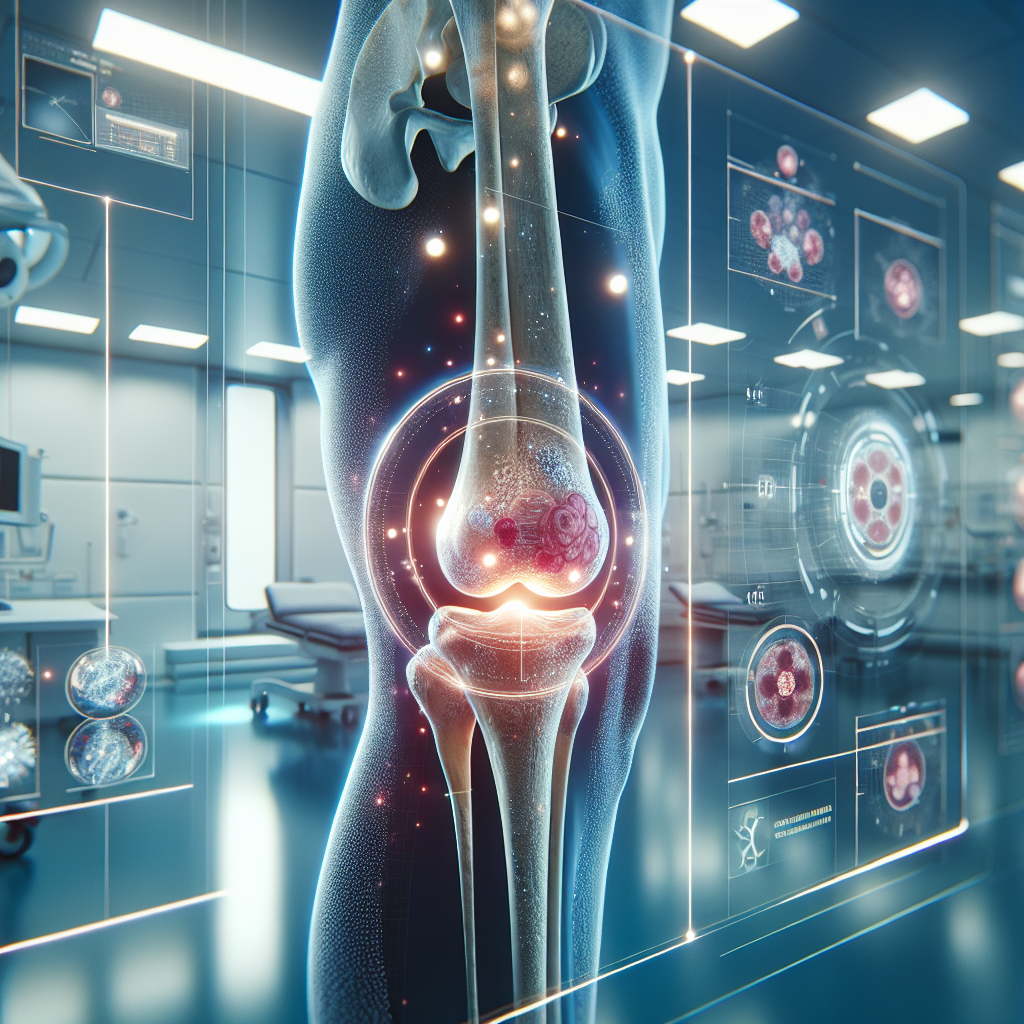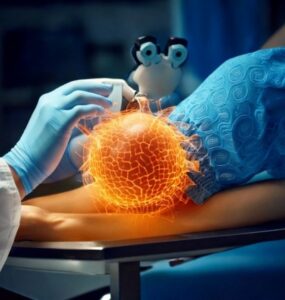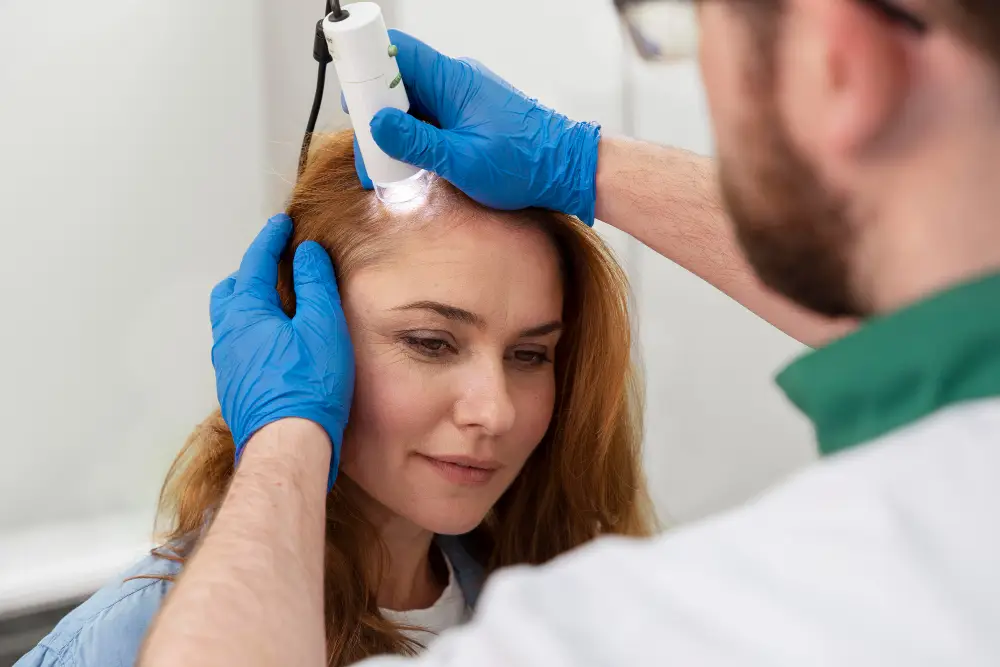
Orthopedic Stem Cell Treatment: Your Comprehensive Guide to Musculoskeletal Regeneration
Navigating options for chronic orthopedic conditions can feel overwhelming. Many patients grapple with persistent pain, limited mobility, and the daunting prospect of invasive surgeries. Our goal at Regencord in Pereira, Colombia, is to empower you with clear, ethical, and in-depth information about regenerative pathways, helping you understand how modern approaches, including certain forms of orthopedic stem cell treatment, could potentially offer a path forward for musculoskeletal regeneration.
Key Takeaways:
- Orthopedic stem cell treatment explores the body’s natural healing capabilities for musculoskeletal conditions like osteoarthritis and bone defects.
- Understanding the science and ethical considerations is paramount for informed decision-making.
- Colombia, with its robust healthcare infrastructure and clear regulatory framework (e.g., INVIMA), offers a compelling option for those seeking international care.
- The patient journey at Regencord in Pereira is designed for comprehensive support, from initial review to post-treatment care.
- Dispelling common myths about international medical care empowers patients to consider all viable pathways for their health.
Table of Contents
- Introduction to Orthopedic Stem Cell Treatment
- The Stakes & Critical Implications of Musculoskeletal Conditions
- The Conventional Approach in the USA & Canada
- The Pereira, Colombia Advantage for Regenerative Care
- The Regencord Restoration Roadmap: Your Guide to International Care
- Our Regenerative Philosophy & Approach
- Overcoming Common Hesitations: Why Seeking Clarity is a Strategic Advantage
- Glossary of Key Terms
- Frequently Asked Questions (FAQ)
- Taking the Next Step: Your Confidential Case Review
Introduction to Orthopedic Stem Cell Treatment
For individuals facing persistent joint pain, cartilage damage, or non-healing bone injuries, the quest for effective and less invasive solutions is often a long and challenging one. Orthopedic stem cell treatment represents a field within regenerative medicine that investigates the potential to support the body’s natural processes of healing and tissue regeneration, particularly within the musculoskeletal system. This includes exploring applications for conditions such as osteoarthritis, specific bone defects, and cartilage regeneration.
The core concept behind many orthopedic regenerative approaches is to utilize biological components, sometimes derived from the patient’s own body, to help repair or replace damaged tissue. While this field holds considerable promise, it’s crucial to approach it with a clear understanding of the science, the current stage of research, and the ethical considerations involved. Our aim is to provide a fact-based perspective, helping you navigate this evolving area of medicine.
The Stakes & Critical Implications of Musculoskeletal Conditions

Musculoskeletal conditions are a leading cause of pain and disability worldwide. According to the World Health Organization (WHO), these conditions significantly impact quality of life, leading to chronic pain, reduced mobility, and considerable healthcare expenditures. Whether it’s the debilitating effects of osteoarthritis, the challenges of healing a complex bone fracture, or the persistent pain from tendon injuries, the implications extend beyond physical discomfort to affect mental well-being, work productivity, and overall independence.
For many, the journey involves managing pain with medications, undergoing physical therapy, and in severe cases, facing the prospect of major surgical interventions like joint replacements. The emotional toll of living with chronic pain and the uncertainty about future mobility can be profound. This is why exploring all available and emerging pathways for musculoskeletal regeneration, grounded in scientific understanding, becomes a critical part of a patient’s informed decision-making process. The U.S. National Institutes of Health (NIH) continues to support extensive research into regenerative medicine to address these widespread challenges, seeking to develop options that improve patient outcomes and quality of life.
The Conventional Approach in the USA & Canada

In countries like the USA and Canada, the conventional management of orthopedic conditions typically follows a stepped approach, starting with conservative measures and progressing to more invasive interventions if necessary. This pathway is heavily guided by established medical associations and regulatory bodies.
Initial Conservative Treatments:
- **Physical Therapy:** Exercise, stretching, and strengthening programs are often the first line of defense to improve mobility and reduce pain.
- **Medications:** Non-steroidal anti-inflammatory drugs (NSAIDs), pain relievers, and sometimes corticosteroid injections are used to manage symptoms.
- **Lifestyle Modifications:** Weight management and activity modification are frequently recommended.
Surgical Interventions:
When conservative treatments fail to provide adequate relief, surgical options are considered. These can range from arthroscopy (a minimally invasive procedure to clean out joint debris or repair minor tears) to major reconstructive surgeries like total joint replacement (e.g., knee or hip replacement).
While these conventional approaches, overseen by bodies like the FDA in the USA and Health Canada, have proven effective for many, they also come with considerations:
- **Recovery Time:** Major surgeries often entail lengthy rehabilitation periods.
- **Risks:** As with any surgery, there are risks of infection, blood clots, and complications from anesthesia.
- **Invasiveness:** Joint replacements, while life-changing for some, are invasive procedures that significantly alter the body’s anatomy.
- **Cost:** Especially in the USA, the costs associated with advanced orthopedic surgeries can be substantial, even with insurance.
- **Limited Regenerative Capacity:** Many conventional surgeries address mechanical issues or remove damaged tissue but do not inherently encourage the body’s own regenerative capabilities.
This landscape often leaves patients seeking alternatives, particularly those who are not ideal surgical candidates, have not found relief from conservative care, or wish to explore pathways that leverage biological repair mechanisms.
The Pereira, Colombia Advantage for Regenerative Care

When considering advanced medical pathways like orthopedic stem cell treatment, the location of care is as important as the treatment itself. Pereira, Colombia, and the medical infrastructure here, offer distinct advantages that resonate deeply with the patient journey we’ve observed and facilitated.
Robust Healthcare Infrastructure & Quality Standards:
Colombia has made significant strides in developing a modern and accessible healthcare system. The nation’s Ministry of Health and INVIMA (Instituto Nacional de Vigilancia de Medicamentos y Alimentos), Colombia’s equivalent of the FDA, oversee strict regulations for medical facilities, devices, and treatments. This ensures that medical practices adhere to international standards of safety and quality. Facilities in Pereira are equipped with contemporary technology, and medical professionals often receive training that meets global benchmarks. Patients can find comfort in knowing their care is provided within a regulated and audited environment, a fact often overlooked when considering international options.
A Patient Journey Focused on Holistic Care:
Our experience reveals that patients often arrive feeling overwhelmed by conflicting information and the emotional toll of chronic musculoskeletal pain. Addressing these psychological barriers through clear, empathetic communication is as crucial as the medical treatment itself, fostering a sense of control and hope. The patient journey in Pereira extends beyond the clinical procedure. It encompasses:
- **Comprehensive Assessment:** A thorough review of your medical history and imaging to determine suitability for regenerative pathways.
- **Personalized Planning:** Tailoring the care plan to your specific orthopedic condition and health goals.
- **Logistical Support:** From travel arrangements to accommodation, our team assists in streamlining the international care experience.
- **Supportive Environment:** The unique blend of advanced medical infrastructure and Pereira’s serene, recuperative environment significantly enhances the patient’s holistic healing journey. We’ve observed that the cultural warmth and reduced external stressors contribute positively to patient well-being, complementing the clinical care provided. This calm atmosphere, nestled in the heart of Colombia’s coffee region, aids in mental and physical restoration.
- **Post-Treatment Guidance:** Providing clear instructions and support for your recovery period.
Economic Value & Accessibility:
The cost of advanced medical treatments can be a significant barrier for many. Colombia offers a highly competitive economic advantage compared to the USA, Canada, or the UK, not by compromising on quality, but due to a more favorable cost of living and operational expenses. This allows for access to advanced regenerative approaches that might otherwise be financially out of reach. This economic value proposition means more patients can potentially explore these options without facing the exorbitant costs prevalent in their home countries.
Choosing Pereira means opting for a destination where medical excellence meets compassionate, regulated care, all within an environment conducive to healing and recovery. It’s an approach to musculoskeletal regeneration that considers the whole person, not just the ailment.
The Regencord Restoration Roadmap: Your Guide to International Care

One of the most common hesitations we encounter is the perceived complexity of seeking medical care abroad. The “Regencord Restoration Roadmap” is a branded patient resource designed to demystify this process and provide a clear, step-by-step guide for individuals considering regenerative pathways in Pereira, Colombia. This tool transforms what might seem like an overwhelming journey into a manageable, well-supported pathway.
How the Roadmap Works:
- **Initial Inquiry & Confidential Case Review:** Your journey begins with a secure and confidential submission of your medical records for a preliminary review by the Regencord team. This initial step helps determine your potential suitability for regenerative approaches.
- **Personalized Care Plan Development:** If deemed a potential candidate, a comprehensive care plan is developed, outlining proposed pathways, estimated timeline, and a transparent cost breakdown.
- **Travel & Logistics Coordination:** Our patient advocacy team provides detailed assistance with travel arrangements, including flights, local transportation, and comfortable accommodation options in Pereira. We aim to make your arrival and stay as seamless as possible.
- **Pre-Treatment Preparation & Consultations:** Upon arrival, you’ll undergo thorough pre-treatment consultations and diagnostics to finalize your care plan and ensure you are fully prepared and informed.
- **Treatment & Recovery in Pereira:** You will receive your treatment in a modern facility. Your recovery in Pereira is supported by the tranquil environment and access to any necessary post-procedure care.
- **Post-Treatment Follow-up & Return Home:** Before your departure, you will receive clear instructions for at-home care and follow-up. Our team remains available to support your transition back home.
The Regencord Restoration Roadmap is more than just a checklist; it’s a commitment to guided, supportive, and transparent care, ensuring you are never alone in your journey toward musculoskeletal regeneration.
Our Regenerative Philosophy & Approach

At Regencord in Pereira, Colombia, our philosophy is rooted in education, patient empowerment, and an ethical, evidence-informed approach to regenerative medicine. We believe that true healing begins with understanding and trust. We do not promote unverified “miracle cures” or make unsubstantiated claims. Instead, we focus on facilitating access to regenerative pathways that align with current scientific understanding and ethical guidelines, particularly for musculoskeletal conditions where the body’s natural reparative processes may be enhanced.
Key Tenets of Our Approach:
- **Education First:** We prioritize providing you with clear, accurate, and comprehensive information drawn from reputable sources like the NIH and PubMed-indexed journals. Our goal is for you to make truly informed decisions.
- **Personalized Assessment:** Every patient’s condition is unique. Our team collaborates to conduct a detailed review of your individual medical history and diagnostic imaging to assess your suitability for specific regenerative approaches.
- **Ethical Framework:** All pathways discussed adhere strictly to national (Colombian Ministry of Health, INVIMA) and international ethical standards for regenerative medicine. Transparency about the potential, limitations, and ongoing research is paramount.
- **Holistic Support:** We understand that health goes beyond medical procedures. Our approach integrates logistical, emotional, and cultural support to create a comprehensive and comfortable patient experience in Pereira.
- **Focus on Potential:** We discuss the potential for various regenerative techniques to support the body’s capacity for healing and tissue remodeling in conditions like osteoarthritis or bone and cartilage challenges. We refrain from guaranteeing outcomes, focusing instead on realistic expectations and the current understanding of these evolving treatments.
Our commitment is to guide you through the complexities of orthopedic stem cell treatment with integrity, ensuring that your journey towards musculoskeletal regeneration is grounded in knowledge and compassionate care.
Overcoming Common Hesitations: Why Seeking Clarity is a Strategic Advantage
Considering an innovative pathway like orthopedic stem cell treatment, especially in an international setting, naturally brings forth questions and concerns. It’s entirely normal to feel a degree of apprehension. We’ve identified and directly address these common hesitations, turning them into opportunities for clarity and confidence.
Hesitation 1: “Is receiving medical care in Colombia safe or legitimate for these kinds of treatments?”
This is a fundamental and valid concern for anyone considering international care. Our response reframes this by focusing on verifiable facts: Colombia possesses a robust and continuously evolving healthcare infrastructure. The country’s regulatory body, INVIMA (Instituto Nacional de Vigilancia de Medicamentos y Alimentos), ensures that medical facilities and procedures meet stringent national health standards, mirroring the oversight of regulatory bodies in other developed nations. Medical professionals in Colombia often receive world-class training, and many facilities are equipped with modern technology. By understanding the well-regulated nature of the Colombian healthcare system, particularly in established medical centers, the focus shifts from a fear of the unknown to an appreciation of a system built on quality and oversight.
Hesitation 2: “This sounds too complicated and overwhelming. I wouldn’t know where to start with international travel for medical reasons.”
The thought of coordinating international travel, medical appointments, and recovery logistics can indeed feel daunting. We address this logistical anxiety directly by outlining a clear, step-by-step patient journey, epitomized by our “Regencord Restoration Roadmap.” This roadmap transforms the perception of a complex process into a manageable, supported pathway. Our dedicated patient advocacy team serves as your guide, assisting with everything from initial case review and treatment planning to travel arrangements, accommodation, and local support in Pereira. We aim to remove the administrative burden, allowing you to focus on your health and recovery. This comprehensive support system makes international care accessible and less stressful.
Hesitation 3: “Is it really more affordable in Colombia, or am I sacrificing quality for cost?”
The affordability of medical care in Colombia is a significant draw, but it’s crucial to understand why this is the case without implying a compromise on quality. The economic advantages are primarily due to a lower cost of living and operational expenses compared to countries like the USA, Canada, or the UK, coupled with a favorable exchange rate. This allows for advanced medical pathways to be offered at a more accessible price point. The investment in high-quality medical training and modern facilities is not diminished; rather, the overall economic environment makes these services more attainable. We emphasize that the value proposition lies in accessing high standards of care within a regulated environment, providing a viable alternative without a reduction in safety or quality.
Hesitation 4: “Will these treatments truly work for *my* specific orthopedic condition, or is it just hype?”
Skepticism about new or evolving medical treatments is healthy and encouraged. We address concerns about efficacy by grounding our discussions in the current scientific understanding and ongoing research in regenerative medicine. We acknowledge that orthopedic stem cell treatment is an evolving field, and results can vary. Our approach is to focus on a personalized assessment and a commitment to transparent communication. We discuss the potential of these approaches for specific conditions like osteoarthritis or bone repair, always framing it within the context of current evidence and ethical guidelines. We avoid making guarantees, instead focusing on whether you might be a suitable candidate for pathways that aim to support your body’s natural reparative capabilities, helping you form realistic expectations for your individual journey.
By proactively addressing these psychological barriers and common misconceptions with clarity, empathy, and verifiable information, we aim to build trust and empower you to make the most informed decision about your orthopedic health.
Glossary of Key Terms
- **Regenerative Medicine:** A field of medicine focused on developing treatments that repair, replace, or regenerate damaged cells, tissues, or organs.
- **Stem Cells:** Undifferentiated cells with the potential to develop into many different cell types and to self-renew.
- **Orthopedic Stem Cell Treatment:** Applications of regenerative strategies, sometimes involving stem cells, aimed at musculoskeletal regeneration, including bone, cartilage, ligament, and tendon repair.
- **Osteoarthritis:** A degenerative joint disease characterized by the breakdown of cartilage and underlying bone, leading to pain and stiffness.
- **Musculoskeletal System:** The system of muscles, bones, joints, tendons, and ligaments that supports the body, allows movement, and protects organs.
- **INVIMA:** Instituto Nacional de Vigilancia de Medicamentos y Alimentos, Colombia’s national regulatory agency for food and medicines, similar to the FDA.
- **Patient Journey:** The entire experience a patient has with a healthcare provider, from initial contact to post-treatment follow-up.
- **Confidential Case Review:** An initial assessment of a patient’s medical records to determine their potential suitability for a particular treatment pathway, conducted with privacy and discretion.
Frequently Asked Questions (FAQ)
Here are answers to some of the most common questions regarding orthopedic stem cell treatment and seeking care in Pereira, Colombia:
Q: What kinds of orthopedic conditions might be explored with regenerative approaches?
A: Regenerative approaches, including certain forms of orthopedic stem cell treatment, are being explored for a range of musculoskeletal conditions. This includes chronic joint pain associated with osteoarthritis, certain types of cartilage damage, bone defects, and some ligament or tendon injuries. A thorough individual case review is essential to determine suitability.
Q: How does orthopedic stem cell treatment differ from traditional surgery?
A: Traditional orthopedic surgery often involves repairing or replacing damaged structures through invasive means (e.g., joint replacement). Regenerative approaches aim to support the body’s natural healing processes or introduce biological components to assist in tissue repair and regeneration. They are often considered less invasive alternatives, though their application depends on the specific condition and individual patient factors.
Q: What is INVIMA’s role in regulating regenerative medicine in Colombia?
A: INVIMA is Colombia’s national regulatory body responsible for ensuring the safety and quality of medical products, devices, and treatments. Their oversight helps ensure that regenerative medicine practices within Colombia adhere to established national and international standards, protecting patient welfare.
Q: What support does Regencord offer for international patients?
A: The team at Regencord in Pereira, Colombia, provides comprehensive support for international patients. This includes a confidential case review, personalized care planning, assistance with travel logistics (flights, accommodation, local transport), on-ground support, and guidance for post-treatment follow-up. Our goal is to make the entire process as seamless and stress-free as possible.
Q: How do I know if I’m a candidate for orthopedic stem cell treatment in Pereira?
A: The first step is to undergo a confidential case review. This involves submitting your medical records for evaluation by the Regencord team. They will assess your specific condition, medical history, and treatment goals to determine if you are a potential candidate for the regenerative pathways available. This personalized assessment ensures that any recommendations are tailored to your unique needs.
Discover if you are a candidate for the regenerative medicine pathways available through the team at Regencord in Pereira, Colombia. Contact us for a confidential case review.



